AMD Radeon HD 6950 & 6970 CrossFire Video Card Reviews
AMD PowerTune Technology
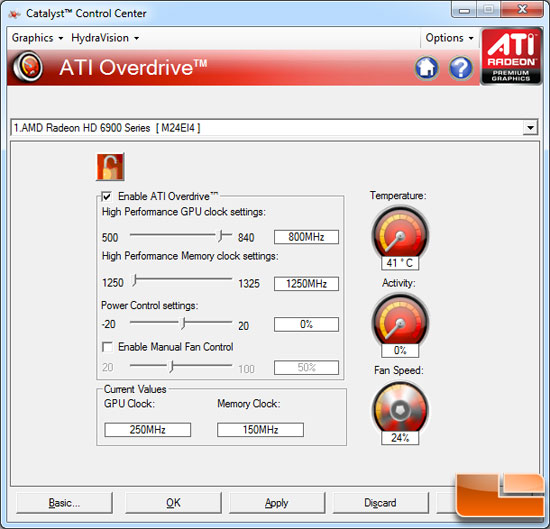
When we opened up ATI Overdrive for the very first time we noticed that AMD has added something called ‘Power Control Settings’ that you can adjust by 20% in either direction. This means that you, the user, have the ability to increase or decrease your board’s power limits by adjusting this slider.
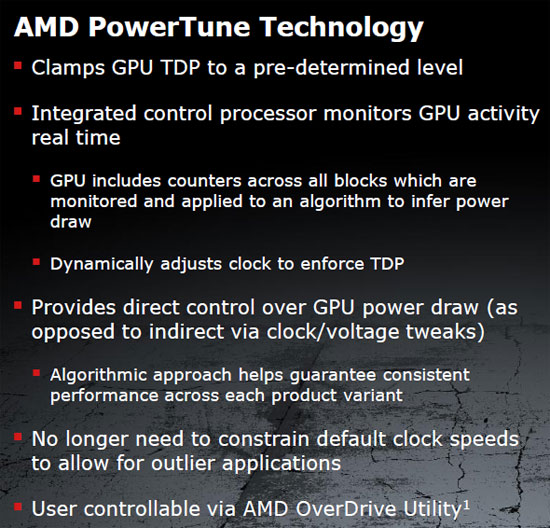
AMD PowerTune is a feature that is only available on AMD Radeon HD 6900 series video cards as the cards have to have the Cayman GPU architecture in order for this functionality to work.
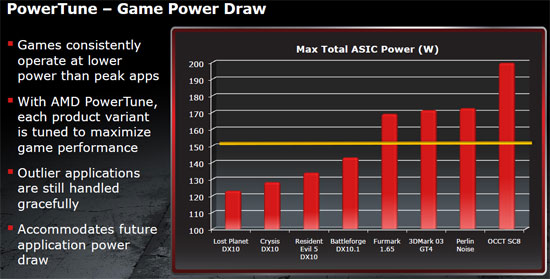
AMD told us that 99% of the games out there don’t get close to the cards’ maximum TDP, but a few applications want to exceed the max TDP on the new Radeon HD 6900 series cards. Notable offenders include Furmark, 3DMark 03 Game Test 4, Perlin Noise, and OCCT with SC8 enabled. By increasing the power control percentage in CCC you can increase the PowerTune limits of your video card.
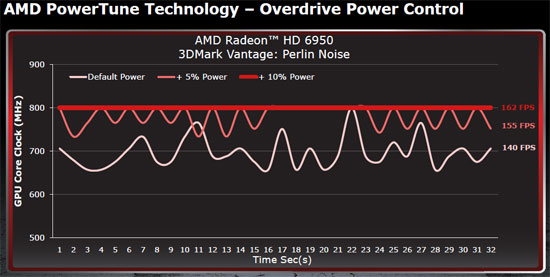
In this example AMD shows that by increasing the PowerTune setting by 10% that they were able to get 22FPS more out of the AMD Radeon HD 6950 in 3DMark Vantage: Perlin Noise.
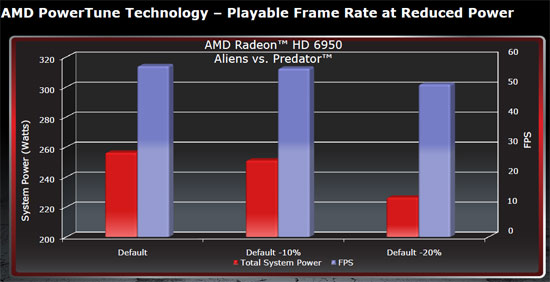
You can also use AMD PowerTune to reduce the power consumed by your system. Say you play a game that you don’t care about frame rates on and you can reduce the power consumption and thus your monthly electric bill. Here AMD shows you that in the game Aliens versus Predator what you can expect in terms of power consumption and FPS when you decrease the PowerTune percentage.
AMD explained PowerTune in detail in some of the documentation they provided us, so feel free to look at their explanation below:
AMD PowerTune is a breakthrough technology that sets an entirely new direction for maximum performance at TDP. It allows the GPU to be designed with higher engine clock speeds which can be applied on the broad set of applications that have thermal headroom.
AMD PowerTune technology helps enable higher performance that is optimized to the thermal limits of the GPU by dynamically adjusting the engine clock during runtime based on an internally calculated GPU power assessment. AMD PowerTune technology also helps to improve the mechanism to deal with applications that would otherwise exceed the GPUs TDP. By dynamically managing the engine clock speeds based on calculations which determine the proximity of the GPU to its TDP limit, AMD PowerTune allows for the GPU to run within its TDP budget at higher nominal clock speeds than otherwise possible.
Without AMD PowerTune technology, a TDP limited GPUs final clock speeds would inherently be based on a compromise between severe performance loss on higher power applications and performance left on the table with lower power applications. With the intelligent monitoring and management capabilities introduced by AMD PowerTune technology, these compromises are removed to maximize performance across the board.
AMD PowerTune technology can be directly adjusted by the user using the AMD Catalyst Control Center AMD Overdrive tab. AMD PowerTune can be tweaked to allow for a more aggressive power containment (and therefore more aggressively limit power and heat) or be used by enthusiasts to relax the enforcement of factory thermal constraints on their AMD Radeon HD 6900 Series graphics card and squeeze every last bit of performance.
The following two charts compare AMD PowerTune set to both the default and at a +5% position. This data shows that by using the +5% PowerTune setting, an enthusiast could increase their average Frames Per Second (FPS) from 140 to 165 in 3DMark Vantage Perlin Noise Feature Test.
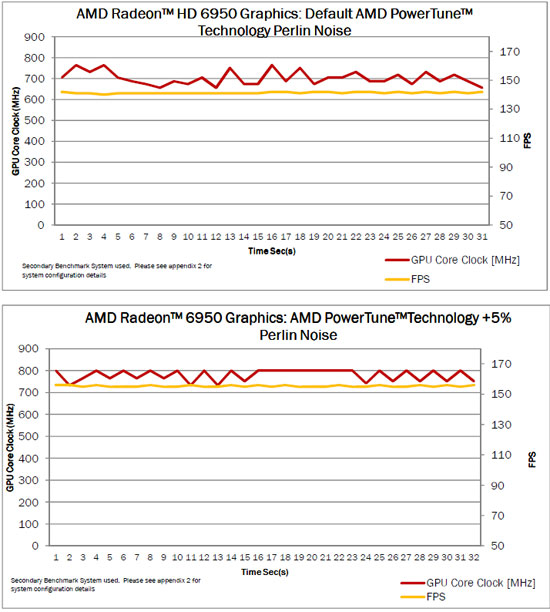
AMD PowerTune technology is very different from existing methods; rather than setting highest state GPU clock speeds based on a worst case TDP approach that can compromise performance in a majority of applications, AMD PowerTune technology can dynamically adjust the performance profile in real time to fit within the TDP envelope. The following charts show the benefits of AMDs PowerTune technology versus the competing technology NVIDIA uses for power containment with the GTX 580.
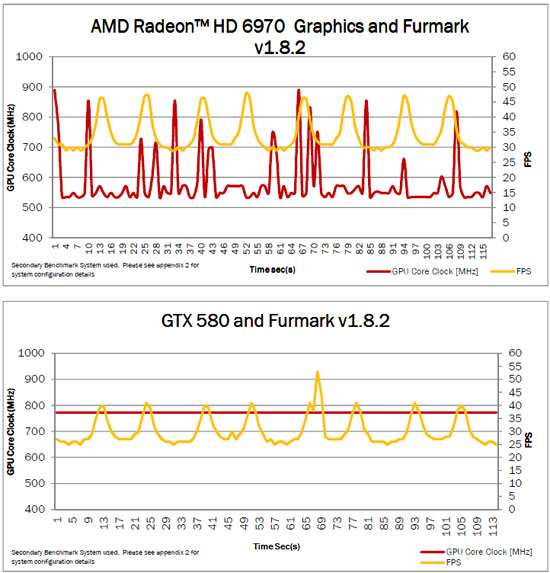
The above charts show the AMD Radeon HD 6970 graphics dynamically changes engine clock
speed to effectively manage TDP, without drastically affecting performance. Conversely, the GTX 580 is shown to simply maintain a static engine clock.

Comments are closed.